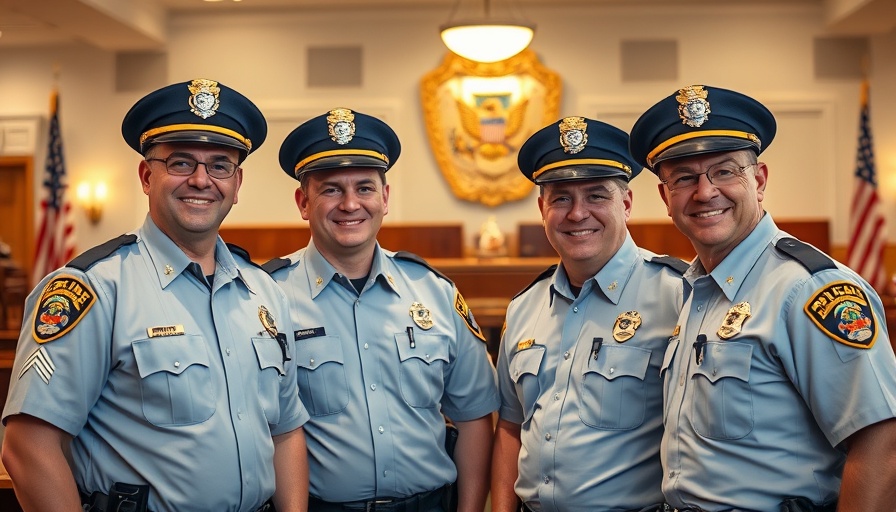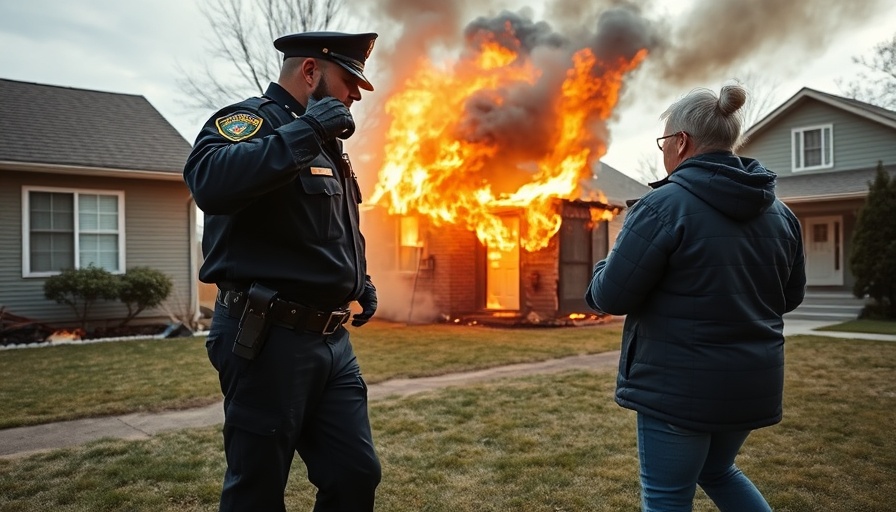
Bodycam Footage Captures Chaotic Confrontation
In a striking display of the dangers faced by law enforcement today, recently released bodycam footage reveals a tense encounter that resulted in the tragic death of 48-year-old Joshua B. Coffey in Niles Township, Michigan. The video, shared by local news outlets, sheds light on the intense moments leading up to Coffey's decision to fire at Berrien County Sheriff’s Deputy Cal Landon.
Understanding the Incident
The incident unfolded on June 30 when Deputy Landon approached a parked vehicle, ultimately leading to a foot pursuit when Coffey failed to produce identification. As Coffey fled, he appeared to mock surrender before suddenly drawing a firearm and targeting Deputy Landon. In a split-second decision characterized by extreme threat perception, Landon returned fire, fatally hitting Coffey. The dramatic escalation illustrates not only the unpredictable nature of police encounters but also the critical need for training in high-stress situations.
The Role of Body Cameras in Enhancing Transparency
Body-worn cameras are increasingly recognized as vital tools for police transparency and accountability. During this incident, the footage served to clarify the sequence of events, offering essential evidence that supports the officer's actions while underscoring the challenges within police-community interactions. As the Michigan State Police continue to investigate the shooting, the footage will provide pivotal insights into the efficacy of current law enforcement policies and tactics.
Challenges in Officer Safety and Community Relations
The incident also reignites conversations around police officer safety and community relations, especially in a climate where tensions between law enforcement and the public have heightened. With training programs already focused on de-escalation and threat assessment, incidents like this highlight the palpable risk that officers face every day and the complexities involved in their operational environments.
The Importance of Robust Police Training
According to Sheriff Charles E. Heit, Deputy Landon exemplified extraordinary composure and skill under pressure. This incident raises awareness towards the importance of continuous training programs aimed at enhancing officers' decision-making capabilities in life-threatening situations. The focus on police training, including the use of body cameras, could nurture a more informed and adaptable police workforce capable of handling volatile scenarios adeptly.
Implications for Law Enforcement Policies
As the dust settles on this tragic event, the ongoing investigation will likely prompt a review of police protocols and training strategies in Michigan and beyond. Activists and policymakers will closely watch the aftermath to ensure that meaningful changes arise from this incident to enhance police-community relations and promote officer safety.
Call to Action: Advocating for Police Reform
In light of the challenges highlighted by this incident, it is crucial for policymakers, law enforcement agencies, and community members to engage in constructive dialogue around police reform. By prioritizing officer wellness, accountability measures, and enhanced training programs, we can work towards establishing safer communities while supporting our law enforcement officers in their mission to protect and serve.
 Add Row
Add Row  Add
Add 

 Add Element
Add Element 


Write A Comment